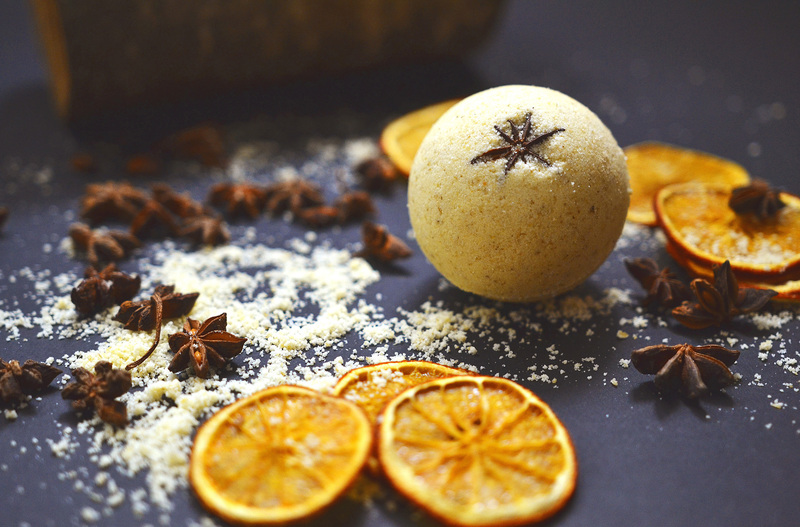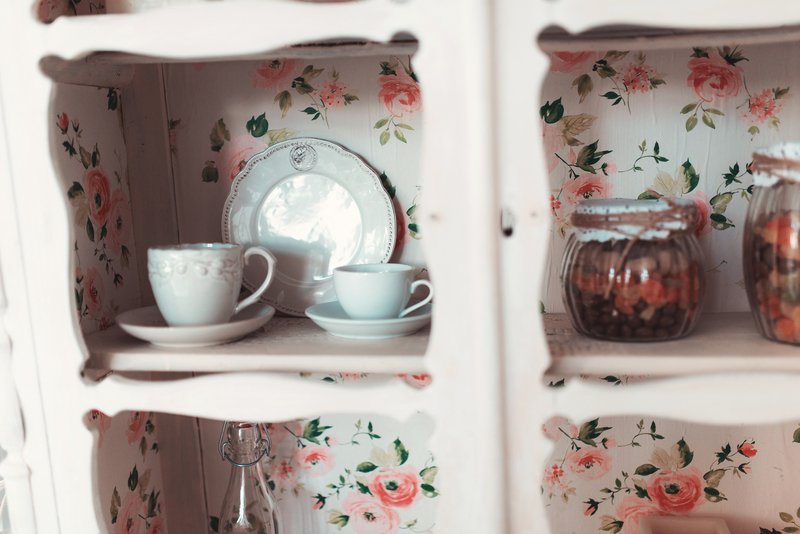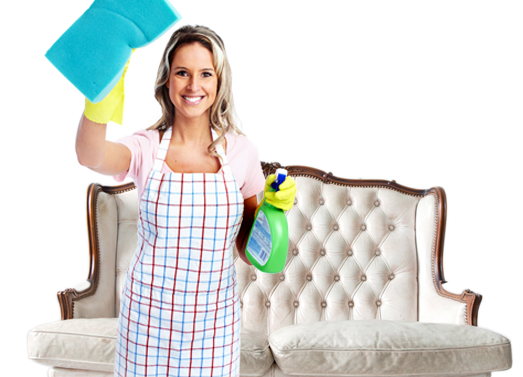Efficient Techniques for Cleaner Carpets and Floors
Posted on 06/09/2025
Efficient Techniques for Cleaner Carpets and Floors
Keeping your carpets and floors spotless enhances not only the appearance but also the hygiene of your living space. With high-traffic areas, muddy footprints, pet dander, food spills, and daily dust, maintaining cleaner carpets and pristine floors can feel like a never-ending battle. Fortunately, by applying some efficient techniques for cleaner carpets and floors, you can save time, effort, and even extend the life of your surfaces.

Why Clean Carpets and Floors Matter
Clean carpets and floors do more than look good. They help reduce allergens, prevent mold growth, maintain indoor air quality, and minimize wear and tear. Dust, grit, and spills can grind into fibers and floor surfaces, making restoration expensive and difficult. With effective carpet and floor cleaning methods, you can easily stay ahead of messes and preserve your home's comfort.
Health Benefits of Immaculate Carpets and Floors
- Allergen Control: Eliminating dust mites, pet dander, and pollen improves allergy symptoms.
- Reduces Mold Risks: Rapid cleaning after spills prevents mold and mildew growth, especially in carpets.
- Clean Air: Fresh floors and carpets minimize airborne pollutants.
- Reduced Germs and Bacteria: Routine cleaning lowers illness-causing microbes in your home.
General Best Practices for Clean Carpets and Floors
Implementing daily and weekly routines is foundational to achieving spotless carpets and floors. The following pillars serve as a baseline for any home or office cleaning strategy:
- Vacuum Frequently: Whether you have carpet, tile, wood, or laminate, frequent vacuuming is crucial in removing dirt before it settles in.
- Spot Clean Immediately: The sooner you tackle stains or messes, the less likely they are to become permanent.
- Remove Shoes at Entryways: A no-shoes policy greatly reduces grit, dirt, and allergens being tracked inside.
- Protect High-Traffic Zones: Use area rugs, runners, and matting to shield vulnerable floors and carpets.
- Regular Deep Cleaning: Schedule deep cleans -- either DIY or professional -- to rejuvenate both carpets and hard flooring.
Efficient Carpet Cleaning Techniques
Carpets require special attention due to their ability to trap dust, dirt, and stains deep within fibers. Here's how you can achieve exceptionally clean carpets using efficient methods:
1. Vacuuming the Right Way
- Slow, Deliberate Movement: Move the vacuum slowly over each area to allow suction to penetrate fibers.
- Adjust Height: Set your vacuum to the correct pile level for optimal debris pickup.
- Use Attachments: Crevice and upholstery tools clean edges and furniture, preventing dust build-up.
- Empty the Bag or Bin: Keeping your vacuum clear ensures maximum suction and efficiency.
2. Spot Cleaning Stains
- Blot, Don't Rub: Always blot stains with a clean, dry cloth before treating to avoid spreading.
- DIY Cleaning Solutions: Mix one tablespoon of mild dishwashing liquid with two cups of warm water for general stains. For tougher stains, a vinegar and water solution can help.
- Test First: Always test any cleaning solution on a hidden section to prevent discoloration.
3. Deep Carpet Cleaning Methods
- Steam Cleaning: Hot water extraction (steam cleaning) is among the most efficient carpet cleaning techniques, reaching deep into fibers.
- Dry Carpet Cleaning Powder: Fast and low-moisture, these powders can be sprinkled, brushed in, and then vacuumed out -- ideal for moisture-sensitive environments.
- Professional Carpet Care: Every 12-18 months, professional-grade cleaning prevents permanent grime and revitalizes dull areas.
Methods for Cleaner Hard Floors (Wood, Tile, Laminate, and Vinyl)
Each flooring type presents its own set of cleaning challenges and needs. Using efficient techniques for spotless floors keeps them looking new and prevents long-term damage.
1. Hardwood Floors
- Dry Dusting: Use microfiber mops or dusters daily to pick up fine particles that can damage finishes.
- Damp Mopping: Clean with a barely damp mop and wood floor cleaner. Avoid excess water, which can warp or stain wood.
- Protective Pads: Place felt pads under furniture to prevent scratches.
- Immediate Spill Cleanup: Wipe even tiny spills right away to avoid water marks or warping.
2. Tile and Grout
- Sweep or Vacuum: Remove surface grit daily to avoid scratching.
- Use pH-Balanced Cleaners: For glazed tiles, a mild detergent or stone soap keeps tiles streak-free.
- Deep Clean Grout: A paste of baking soda and water can gently clean stained grout lines when applied with a soft brush (like an old toothbrush).
- Seal Grout: Annually sealing grout prevents long-term stains and moisture absorption.
3. Laminate and Vinyl Floors
- Dry Cleaning: Microfiber dust mops or vacuums (with a soft brush attachment) lift dirt without scratching.
- Minimal Moisture: Wash with a damp -- not wet -- mop, and always dry floors quickly to prevent swelling or warping.
- Avoid Harsh Chemicals: Acidic or abrasive cleaners can damage the finish.
- Protective Mats: Door mats absorb debris and minimize scratches from outside grit.
Natural and Eco-Friendly Solutions for Spotless Carpets and Floors
Many chemical cleaners promise fast results, but they can pose health risks and damage finishes over time. Switching to green carpet and floor cleaning techniques not only benefits your family but also the environment.
- Baking Soda: Excellent for deodorizing carpets and scrubbing grout or tough stains.
- White Vinegar: Dissolves mineral deposits and breaks down fat-based stains. Use sparingly on wood or stone to prevent etching.
- Lemon Juice: Naturally lifts stains and imparts a pleasant scent (do not use undiluted on marble or stone).
- Cornstarch: Blot up grease spots or polish floors when sprinkled and buffed with a soft cloth.
- Eco-Friendly Detergents: Look for plant-based, biodegradable cleaning products approved for your floor type.
How to Prevent Dirt and Damage on Floors and Carpets
An ounce of prevention is worth a pound of cure. Incorporating simple preventive measures alongside efficient cleaning truly maximizes the benefits for cleaner floors and carpets.
- High-Quality Door Mats: Place mats inside and outside entries to trap the majority of dirt before it gets inside.
- Shoe-Free Policy: Keep a shoe rack or bench at entrances to encourage removal of footwear.
- Regular Grooming for Pets: Frequently brushing pets minimizes shedding and dander build-up in carpets and on floors.
- Use Protective Rugs: Place rugs or runners in hallways and around sinks or stoves to catch messes before they reach the floor.
- Seal and Treat: Timber and tile floors benefit from periodic sealing to repel stains and moisture.
- Household Rules: Encourage eating and drinking in designated areas to reduce spill risks over exposed carpet and flooring.
Top Tools and Supplies for Keeping Carpets and Floors Clean
Having the right cleaning equipment for floors and carpets makes your routine easier, faster, and more effective. Here's what every efficient cleaner should have:
- Quality Vacuum (with HEPA Filter): Picks up allergens and dust -- essential for both carpets and hard floors.
- Microfiber Cloths and Mops: Efficiently trap dust, bacteria, and grime with minimal cleaning product.
- Carpet Spot Cleaner or Extractor: For removing stubborn stains and deep-cleaning high-traffic carpet sections.
- Bristle Brushes: Soft for grout, stiff for outdoor mats or textured tiles.
- Spray Bottles: Ideal for applying DIY or commercial floor and carpet cleaners in measured quantities.
- Protective Gloves: Keep hands safe when treating tough stains or using cleaning agents.
- Floor-Appropriate Cleaners: Stock gentle, floor-specific formulas (wood, tile, vinyl, or carpet) to prevent accidental damage.
Professional Tips for Maintaining Cleaner Carpets and Floors
Cleaning experts recommend a blend of routine care, targeted deep cleaning, and prompt action. Below are some pro strategies for ongoing upkeep:
- Schedule Deep Cleans: Organize seasonal floor and carpet cleanings -- spring and autumn are optimal to remove pollen, mud, and dust from changing weather.
- Rotate Furniture: Regularly moving couches and tables prevents indentations and uneven wear on carpets and floors.
- Prompt Stain Treatment: Treat stains immediately -- the longer you wait, the tougher they'll be to lift.
- Smart Floor Selection: Choose flooring suitable for your lifestyle (e.g., select resilient vinyl for kids' play areas).
- Humidity Control: Keep rooms well-ventilated; use dehumidifiers where moisture may threaten floors or carpets.
Common Mistakes to Avoid When Cleaning Carpets and Floors
Even with the best intentions, certain habits can sabotage your efforts for efficiently clean floors and carpets. Be mindful to avoid:
- Overwetting Carpets: Too much moisture fosters mold and leaves musty odors.
- Using Harsh Chemicals: Bleach and ammonia can bleach or weaken fibers and destroy protective finishes.
- Neglecting Entryways: Ignoring doormats or letting them saturate with dirt invites more debris inside.
- Skipping Routine Cleaning: Infrequent vacuuming or mopping allows dirt and toxins to accumulate.
- Neglecting Under Furniture: Failing to clean beneath or behind furniture leads to hidden dust and allergens.

Frequently Asked Questions About Keeping Carpets and Floors Efficiently Clean
How often should I vacuum my carpets?
For busiest areas, every other day is ideal, while less-trafficked rooms can be vacuumed once a week.
Can I use vinegar on all types of floors?
Vinegar is versatile but should be avoided on natural stone and finished wood, as acidity can damage protective coatings.
How do I remove pet hair from carpets and floors?
Vacuum with a pet hair brush attachment; for stubborn hairs, a damp rubber glove or squeegee gently lifts fur from surfaces.
What's the best way to prevent carpet stains?
Immediate spot cleaning, regular vacuuming, using stain-resistant treatments, and a no-shoes policy are your best safeguards.
Conclusion: The Path to Cleaner Carpets and Floors
Achieving spotless carpets and immaculate floors doesn't require endless scrubbing or harsh chemicals. By introducing smart preventive measures, using efficient cleaning techniques, and scheduling regular deep cleans, your home will look, feel, and smell its absolute best. Clean carpets and floors also mean greater health, comfort, and value for your property. Start updating your cleaning strategies today and enjoy the lasting benefits of a sparkling home environment!




